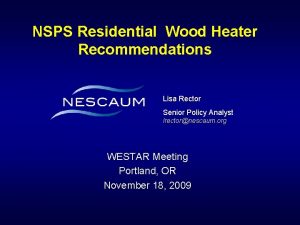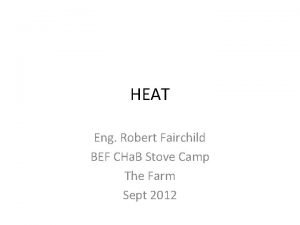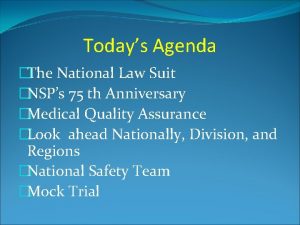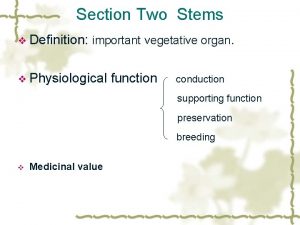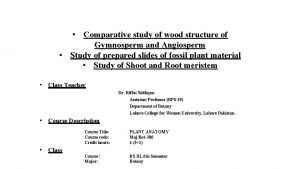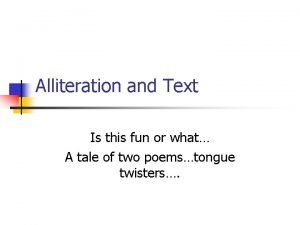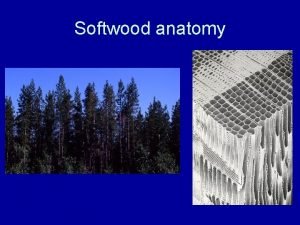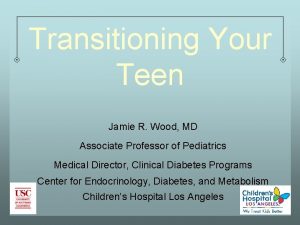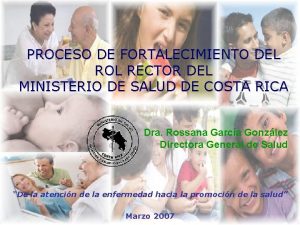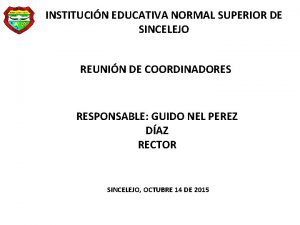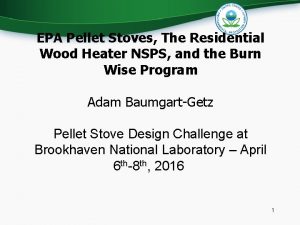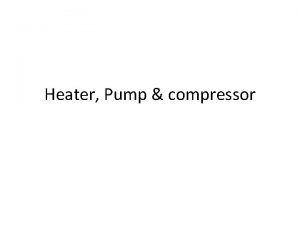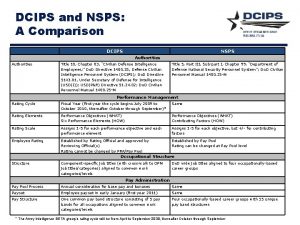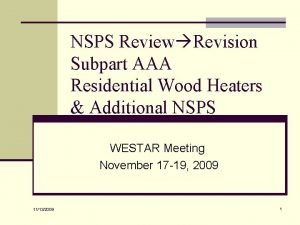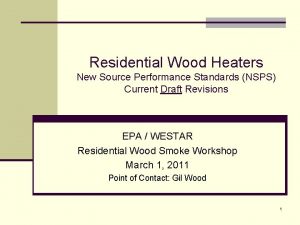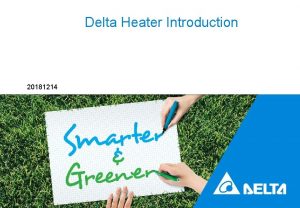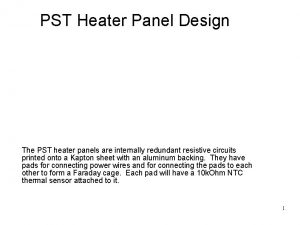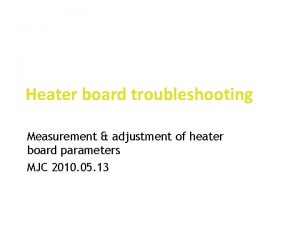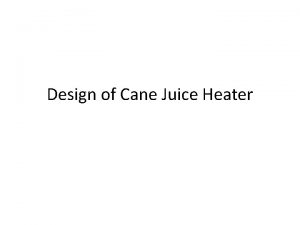NSPS Residential Wood Heater Recommendations Lisa Rector Senior










- Slides: 10

NSPS Residential Wood Heater Recommendations Lisa Rector Senior Policy Analyst lrector@nescaum. org WESTAR Meeting Portland, OR November 18, 2009

Overarching Comments • Strongly support a revision • Wood heat technology has advanced significantly since EPA’s existing standards were phased-in • Address significant issues with existing standard • Expand efforts to address non-heaters, other solid fuels and existing inventory • Concerns with EPA’s timeline 2

Affected Devices • Move away from regulations based on definitions of device type • Develop standards that incorporate all solid fuel devices • Move away from residential and commercial delineations • Regulate based on bins delineated by heat delivered and feeding mechanism Expand the NSPS for industrial, commercial, and institutional (ICI) boilers to cover all boilers, regardless of size 3

Suggested Regulatory Construct Delivered Heat (Btu output) Automatic feed Hand fed <8, 000 Btu’s x lb/mmbtu heat output No run to exceed y g/hr 8, 000 -35, 000 Btu x lb/mmbtu heat output No run to exceed y g/hr 35, 001 -120, 000 Btu x lb/mmbtu heat output No run to exceed y g/hr 120, 001 – 200, 000 x lb/mmbtu heat output No run to exceed y g/hr >200, 000 x lb/mmbtu heat output No run to exceed y g/hr 4

Pollutants Covered Under the Standard • Establish standards as mass emissions per unit time for other criteria and air toxic pollutants to include CO, VOCs, NOx, SOx , PAHs, dioxin and mercury • Establish emission limits for CO 2 e and black carbon 5

Fuel Types and Various Devices • Expand the regulatory list to include all solid fuels, including coal –likely via a separate listing • Develop fuel specifications for manufactured fuels, e. g. , wood pellets • Ensure that dual fuel units are fully tested for emissions for all possible fuels 6

Testing • Method should more closely follow testing requirements under other NSPS regulations • Method should follow EPA’s OECA’s policy for testing – “ Facilities are responsible for ensuring compliance with the emission limits under all conditions. Therefore, any stack test that is conducted must demonstrate that a facility is capable of complying with the applicable standards at all times. As a result, a facility should test…. In addition, the facility should use the highest emitting fuel for the pollutant tested or as otherwise justified, and should process material that causes the highest emissions. ” 7

Test Method Recommendations • The test must represent worst case emission scenarios, including burn rate and fuel type. • The test should simulate all operations that are feasible in the real world. • The test should continue to measure total particulate matter. • The test method should be standardized as much as possible across device types, using the same fuel, fuel configurations, and burn categories. • Develop a standardized efficiency test within the revised NSPS. 8

Review of Results • Continue with the process of OECA review and approval of certifications. • Work with manufacturers to address concerns. • Only allow third party process for voluntary programs, and audit results to determine its effectiveness. • Incorporate electronic reporting and streamline efforts for providing data to EPA to increase the efficiency of program oversight. • Increase OECA’s oversight and audit efforts for this rule. 9

Form of the Standard • Use a common metric for emission standards across device types • Use a hybrid emission standard that incorporates pollution generated per unit of heat delivered and pollution generated over a period of time • Ensure that standards will not result in exposures above a NAAQS • Establish (separate) minimum performance standards for combustion efficiency 10
